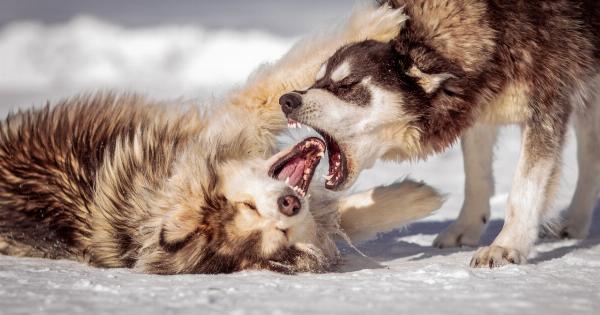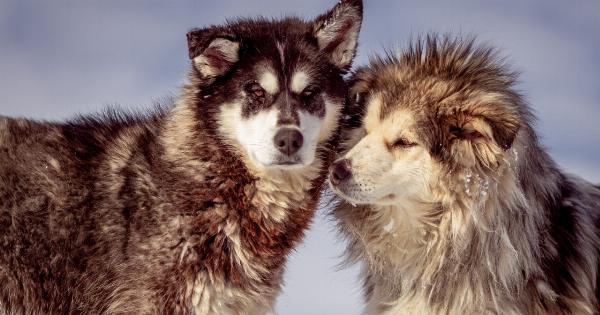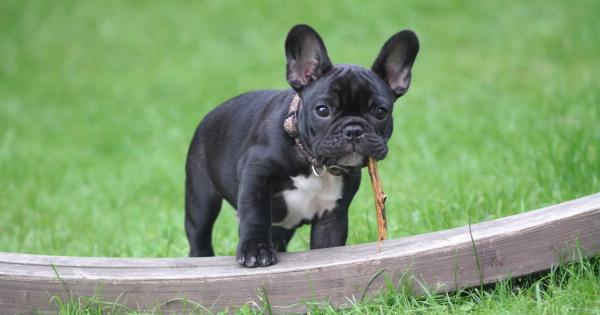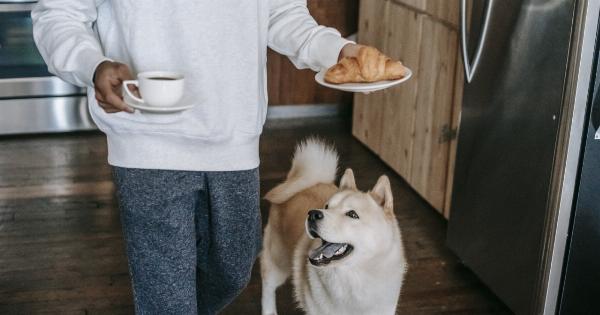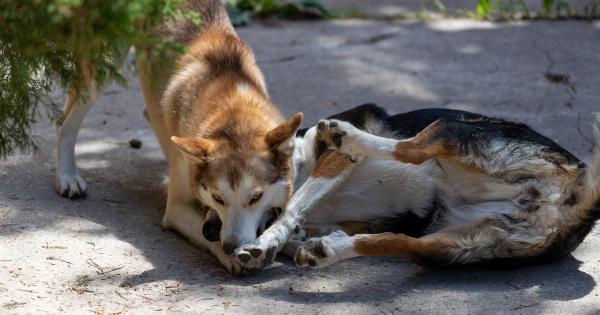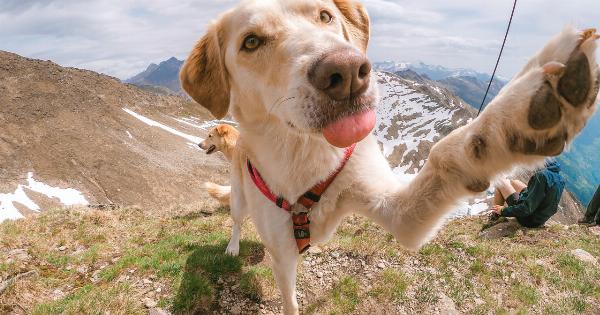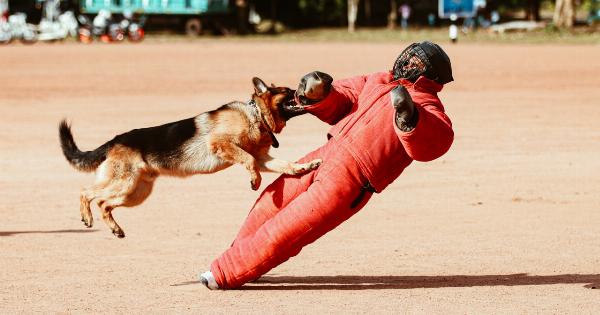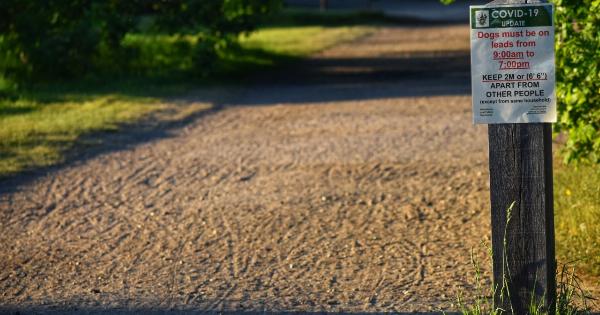Owning a dog is undoubtedly a delightful experience filled with love, companionship, and endless wagging tails. Unfortunately, there may come a time when our beloved furry friends display aggressive behavior, leaving us puzzled and concerned.
In these instances, it is crucial to understand the underlying reasons behind their actions. This article will explore the surprising truth about why our dogs bite, shedding light on their instincts and behavioral factors while providing valuable insights on preventing such incidents.
H2: Natural Instincts and Territorial Behavior
Dogs are descendants of wolves, and although domesticated, they still retain some instinctual behaviors today.
One of these instincts is their territoriality, which can trigger aggressive responses when they perceive someone as a threat to their territory or family. Understanding this primal aspect of their nature allows dog owners to recognize situations in which their pets may feel compelled to protect their space or loved ones.
H2: Fear and Anxiousness
Sometimes, an episode of aggression in dogs can stem from fear or anxiety.
Dogs that have experienced negative encounters or have been poorly socialized may feel threatened in various situations, leading them to exhibit aggressive behavior as a means of self-defense. It is important for dog owners to create a safe and comfortable environment while working on desensitization techniques to help alleviate their furry friend’s anxiety.
H2: Pain and Health Issues
Imagine enduring physical pain without the ability to communicate it effectively. Dogs, like humans, might lash out when suffering from discomfort. In several cases, aggression is a direct response to pain or undiagnosed health issues.
Regular check-ups and attentive care are essential to identify any underlying medical conditions that could be causing our pets to act out unexpectedly.
H2: Lack of Socialization
Just as humans require social interactions to develop appropriate communication skills, dogs also need early and ongoing socialization to understand proper behavior.
Puppies that miss out on this essential process might struggle with unfamiliar situations or other dogs, leading to fear or aggression. As responsible dog owners, it is vital to expose our furry companions to a range of experiences, people, and animals from a young age to ensure they grow into well-adjusted and sociable adults.
H2: Protective Parental Instincts
When our canine companions become parents, their protective instincts can sometimes take over. A normally gentle and friendly dog may exhibit aggression if they perceive a potential threat or danger to their puppies.
It is crucial to give these new parents the space and privacy they need while supervising interactions to ensure safety for all involved. Providing a secure and calm environment will help minimize any potential risks during this phase.
H2: Miscommunication and Signals
Dogs use a wide range of body language and vocalizations to communicate with one another and with humans.
However, miscommunication can occur when their signals are misinterpreted or when we unintentionally display behaviors that are perceived as threatening. Learning to read and understand our dog’s communication cues, such as tail wagging, growling, or posture, is essential to effectively communicate and avoid misunderstandings that could lead to bites.
H2: Resource Guarding
Resource guarding is a common behavioral issue that can escalate into aggression if left unaddressed. Dogs naturally guard valuable items like food, toys, or even their favorite spots.
When they feel their possessions are threatened, they may respond aggressively to protect what they perceive as their property. Implementing positive reinforcement training and teaching our dogs to associate people approaching these resources with rewards can help mitigate this behavior.
H2: Prey Drive and Chasing Instincts
Certain breeds or individual dogs may exhibit a strong prey drive or chasing instinct that could lead to aggression. This instinct is more prevalent in breeds specifically bred for hunting or herding purposes.
It is important to provide appropriate outlets for these instincts, such as engaging in interactive play or participating in dog sports like agility or obedience training. Channeling their energy through constructive activities helps prevent frustration and potential aggressive behaviors.
H2: Sickness or Sudden Change in Behavior
If a well-behaved dog suddenly displays aggressive behavior, it is crucial to consider potential underlying health issues. Dogs unable to communicate their discomfort or illness may resort to aggression.
Changes in behavior, appetite, or activity levels may indicate an underlying health problem that requires immediate veterinary attention. Early detection and treatment can help resolve any medical issues and restore your dog’s natural behavior.
H2: Negative Reinforcement and Traumatic Experiences
Sadly, abusive or traumatic experiences can trigger aggressive behavior in dogs. Dogs that have suffered abuse or neglect may become defensive or fearful as a result of their past traumas.
Patience, positive reinforcement, and professional help from experienced trainers or behaviorists are fundamental in rehabilitating dogs that have endured such traumatic experiences. It is essential to create a loving and secure environment to help them regain trust and confidence.
H2: Preventing Dog Bites: Tips and Strategies
While understanding the reasons behind dog bites is crucial, prevention is key. As responsible dog owners, there are proactive steps we can take to minimize the likelihood of our furry friends engaging in aggressive behavior.
Here are some practical tips and strategies to prevent dog bites:.
H2: Early Socialization and Ongoing Training
Socialization is fundamental for every dog. Exposing them to various environments, people, animals, and situations from an early age helps them become well-adjusted and less fearful.
Enrolling in training classes that focus on positive reinforcement techniques is also highly beneficial. Ongoing training throughout a dog’s life promotes good behavior and strengthens the bond between the owner and the pet.
H2: Supervise and Teach Children Appropriate Interactions
Children should be taught how to interact with dogs safely and respectfully. Supervision is crucial to ensure both the child’s and the dog’s well-being.
Teach children not to approach unknown dogs without the owner’s permission and to avoid pulling the dog’s tail or ears. Additionally, it is important to monitor all child-dog interactions closely and never leave them alone together, especially with unfamiliar dogs.
H2: Avoid Encouraging Aggressive Play
Playtime should be enjoyable and stimulating for both the dog and the owner. However, it is essential to avoid rough play or games that may encourage aggressive behavior, such as tug-of-war or wrestling.
These types of activities can inadvertently reinforce dominance or trigger a dog’s prey drive. Instead, focus on positive and constructive play, rewarding good behavior with treats or praise.
H2: Recognize and Respect Your Dog’s Boundaries
Just like humans, dogs have their limits. It is important to respect and understand your dog’s boundaries. Avoid putting them in uncomfortable situations or forcing them to interact with people or animals if they appear fearful or anxious.
By recognizing and respecting their limits, we can create a safe and secure environment for our furry friends, ultimately reducing the chances of aggressive behavior.
H2: Regular Health Check-ups
Consistent veterinary care is vital to maintain your dog’s overall health and well-being. Regular check-ups help identify any underlying health issues that could potentially contribute to aggression, ensuring appropriate diagnosis and treatment.
Consulting with a qualified veterinarian helps ensure your dog leads a happy and healthy life, thereby reducing the risk of behavioral problems.
H2: Seek Professional Help and Guidance
If you are struggling with your dog’s aggressive behavior, seeking the assistance of a professional dog trainer, behaviorist, or veterinarian is highly recommended.
These experts can provide tailored guidance, behavior modification techniques, and help you navigate through challenging situations, ensuring the safety of everyone involved. Remember, there is no shame in seeking professional help, and your dog’s well-being should always be the top priority.
H2: Conclusion
Discovering the reasons behind why our dogs bite is an essential step in preventing such incidents and ensuring the well-being of both humans and canines.
From their natural instincts and territorial behaviors to fear, anxiety, and past traumatic experiences, a multitude of factors can contribute to aggressive behavior in dogs. By comprehending and addressing these factors, practicing responsible ownership, and seeking professional guidance when needed, we can foster a harmonious and loving relationship with our furry companions for a lifetime.




